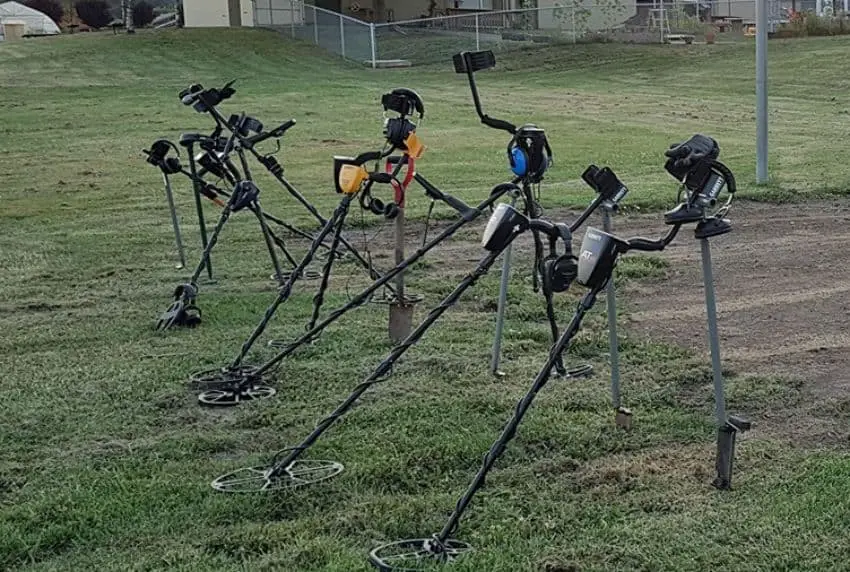
When it comes to metal detectors in general, there are mainly 2 different types VLF (Very Low Frequency) and PI (Pulse Induction) Detectors …
However, unless you are a professional Gold Prospector, all what you will need most of the time is a VLF Detector … That’s why, I’ve took the type to put this Post together not only to List the Best VLFs out there, in my opinion, but also to breakdown many common questions that hobbyists keep asking about them …
… This Post will certainly be extremely helpful for you, so stay tuned!
Best VLF Metal Detectors
I list 7 models I truly believe in their high capabilities, I will go from the cheapest one the high end detectors … Hopefully you will be able to pick a good model for you!
1. Bounty Hunter Tracker IV
![]()
The Bounty Hunter Tracker 4 (Check it Here at Amazon) is very good Very Low Frequency model …
… Not only is the detector available within a budgeted price, but also it is lightweight and very simple to use.
Good to mention that this machine is extremely popular amongst new hobbyists and beginners!
Even if it has a simple analog display, it still comes with some good discrimination and sensitivity adjustments, which is not common in other detectors being sold at this price point.
Below, I list few more features you should know about:
- Decent operating frequency of 6.7 kHz.
- 3 Search modes including an all-metal mode.
- Built-in speaker, if you need to use headphones (Check these quality detection headphones).
- 2 audio tones to roughly predict your target (ferrous, non-ferrous).
- Decent depth of about 6-8 inches depending on the ground condition.
If you are a straight beginner, then there you go!
2. Fisher F22
The Fisher F22 (Check it Here at Amazon) is often identified by its 9-inch triangulated elliptical concentric coil…
… This is a VLF detection device that I personally like and often recommend to beginners! You might notice that if you check other Posts of this website.
Compared to its price, it is surprisingly able to go as deep as 9 underground which is pretty good!
One thing I appreciate about this model is its screen which is intuitive and very easy to read … Even compared to other similar machines, its reading are quite accurate and will allow you to predict targets you are about to dig for …
… However, I won’t suggest you to rely 100% on the depth indicator at the beginning, I would suggest to you to bench test in different ground conditions to be able to get a feel of this indicator!
Below more features to have in mind:
- 10 Sensitivity levels, you won’t feel the need to play much with that at the beginning … But as you learn more your machine and know what targets are you looking for, then you will start playing quite frequently with the sensitivity setting.
- 4 search modes (coins, relics, custom or jewelry).
- Double digit Target Id, Depends on the conductivity of your target.
- Comes with 2 AA Batteries, which provides an autonomy that goes anywhere between 25 and 30 hours.
3. Garrett ACE 300
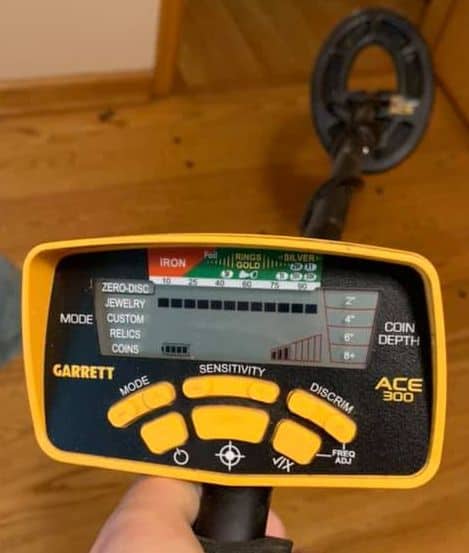
There is no doubt that the Garrett ACE 300 (Check it Here at Amazon) is a quality VLF model that you should really consider at a certain point of your life …
… I really believe that it is easy to operate even if you are a novice … It would also be a pretty good upgrade if you already have a low end machine.
Its target id and reading are probably the most accurate amongst the detectors in its price range!
Other than that you will find:
- Larger coil size, will allow you to cover more space and go deeper.
- Pretty High frequency operation, this will give you a significant edge to pick up smaller targets.
- 5 search modes, (0 discm, Custom, Relics, Jewelry, Coins).
- Electronic Pinpointing, to locate targets even more precisely.
- 8 Sensitivity Levels.
- Pretty accurate depth indicator.
- Waterproof search coil.
The only limitation I see for this one is its control box that is not waterproof … So you can only use it for shallow water detecting.
4. Fisher F44
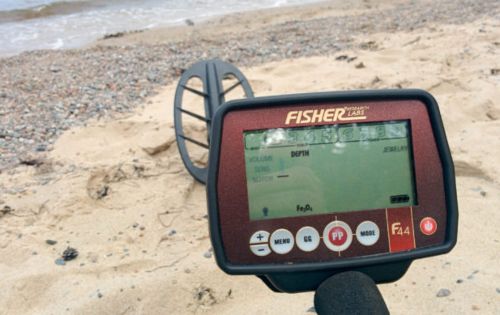
The Fisher F44 (Check it Here at Amazon) is an extremely versatile, robust, and weatherproof VLF detector to have.
These are the key features of this model:
- 5 search modes
- Artifact: Gets you all iron signals, which may lead to finding some tremendous historical relics.
- Jewelry: This mode overlooks all iron signals so you can only focus on non-ferrous targets.
- Coins: You can get rid of iron signals, pull tabs and any other trash signals out of the way
- Custom mode: to establish your own search parameters using the notch feature
- All metal: You will be getting a signal from all metals with this mode
- Backlight: Really useful at night.
- Adjustable iron audio: in case you are dealing with a high trashy environment.
- Weatherproof control box
- Both automatic and manual ground balance
- Lightweight, only 2.3lb
- 4 Indicating audio tones:
- Bass
- Low
- Medium
- High
- Decent Depth indicator.
- Possibility to integrate 3 different coil sizes:
- 7 inch
- 9 inch
- 11 inch
That’s really a solid choice if you are planning to detect for the many years to come!
5. Garrett AT Pro
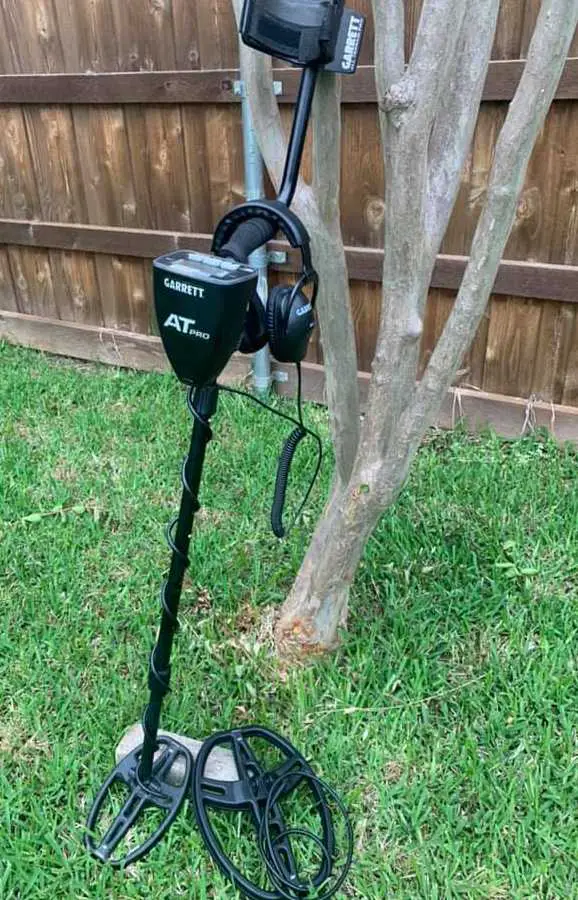
The Garrett AT Pro (Check it Here at Amazon) is probably the most famous and popular vlf detecting machine among all the ones I am listing right here …
… If you love coins and want to find more of that, then the AT Pro is great asset!
Below I list the most important features compared to the previous ones in the List:
- High Ability to discriminate junk.
- You can use it under any ground condition even conductive soil.
- Operate on 15kHz which is a quite high frequency that could allow you to even go for gold nuggets.
- Very good depth that can go up to 12 inches.
- Pretty Light, only 03 lbs.
- Fully Waterproof (Coil and control box), up to 10 feet.
If you are looking for a model for the many years to come, then this one is the way you should go!
6. Equinox 800
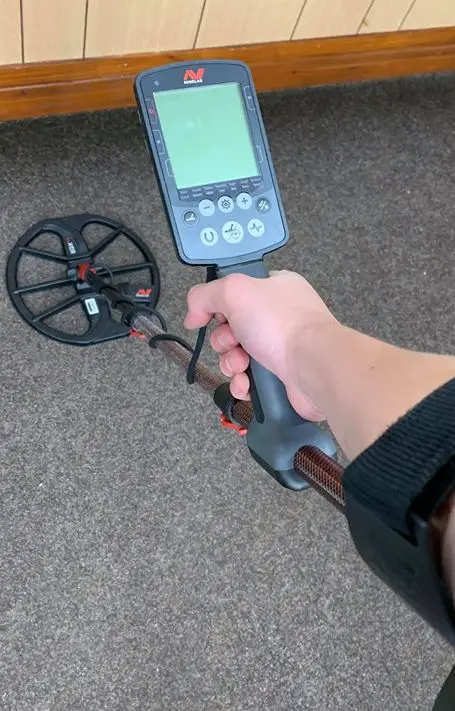
If you are looking for a VLF Detecting device that can do almost everything, including Gold Prospecting, then, Minelab’s Equinox 800 (Check it Here at Amazon) is certainly a SOLID Pick!
What makes this model superior of any other machine I am including here on the list is the Multi-IQ technology it brings to the table …
… In fact, most detectors have a single frequency they actually operate on, for this one, this is not the case … Indeed, it can operate on 5 different frequencies separately or all at the same time depending on what you are actually looking for!
These frequencies are:
- 5 kHz
- 10 kHz
- 15 kHz
- 20 kHz
- 40 kHz
- Plus the Multi-frequency mode that uses all these frequencies together
2 more things I like about the NOX 800 are:
- The 4 Different modes it has (Parks, Fields, Beach, Gold), all you really need to do is to select the type of terrain you are about to explore and start swinging.
- Possibility to update the machine’s software for Free once Minelab (the manufacturer) release a new version on their Website.
These 2 elements I’ve just listed are really helpful, especially if you are planning on using it for the long run!
7. XP Deus
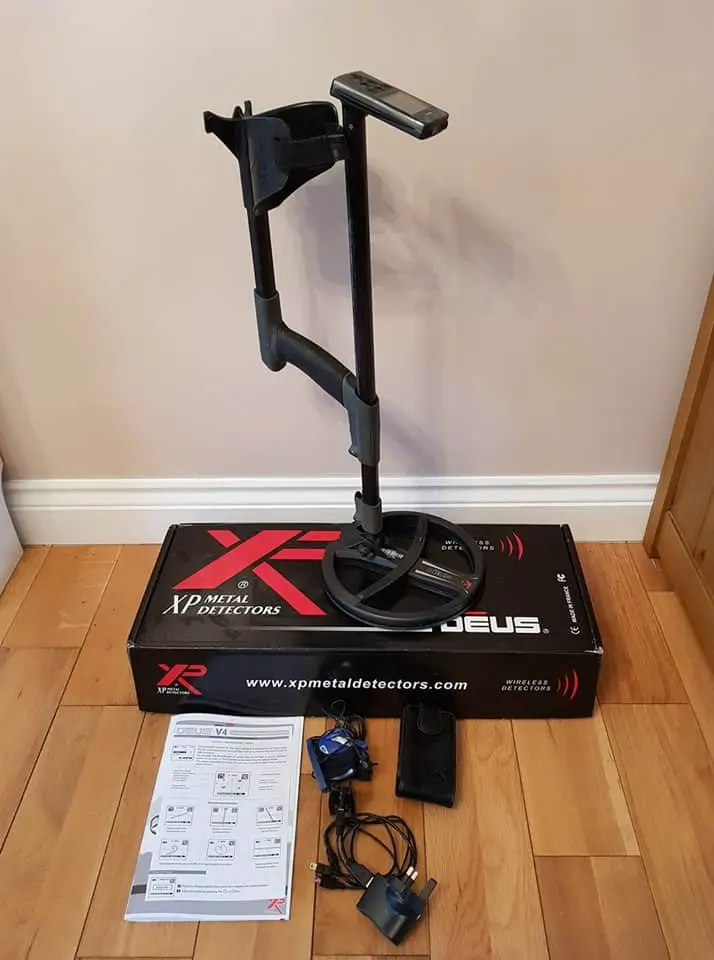
I personally consider The XP Deus (Check it Here at Amazon) as a professional grade VLF metal detector … Indeed, not only it is probably the most costly in this list, but also it has a 17 different search modes!
9 of them are factory search modes and the other 8 are custom search modes. In addition to that, you will beneficiate from 5 different audio tones.
To not make this read long for you, let me include the key features to keep in mind:
- Weighs only 2 pounds
- Solid Controller
- Double D 11 inches search coil that is, surprise surprise, fully waterproof
- The shaft has a foldable design
- A stem that can also be folded for easy storage
- Headphones that are functional in any weather be charged with a USB connection and that can completely isolate background noise.
Finally, I wouldn’t suggest this model if it is your first detector, I would, instead, recommend it as an upgrade to your current machine!
How do VLF detectors work?
Very Low-Frequency detectors are considered to be the most versatile type out there, based on the range of metallic objects it can actually find for you.
VLFs function with 2 distinct coils. These include:
- Transmitter coil: This is the outer coil loop, within which is a coil of wire. Electricity is passed along this wire, first in one direction and then in the other direction. The electricity passed can even go up to thousands of times per second.
- Receiver coil: This is the inner coil loop, which contains another coil of wire. It is what acts as an antenna to pick up and then amplify the frequencies that are coming from target objects in the ground.
This is getting a bit technical, but please bear with me for a second! (btw, if you don’t care about this technical part, just skip to the next paragraphs)
So, to make it simpler for you, just keep in mind that the electric current that moves through the transmitter coil creates an electromagnetic field …
… The polarity of this magnetic field is perpendicular or opposite to that of the coil of wire. So every time the current changes direction, the polarity of the magnetic field also changes …
… This means that if the coil of wire is parallel to the ground, the magnetic field keeps constantly pushing down into the ground, and then it pulls back from it!
As this magnetic field keeps pulsing back and forth into the ground, it also interacts with any conductive objects that are present in the ground. This causes them to generate weak magnetic fields of their own.
The polarity of the target’s magnetic field is going to be directly opposite to that created by the transmitter coil’s magnetic field:
For example, if the transmitter coil’s field is pulsing downwards, then the object’s field is going to be pulsing upwards.
When the receiver coil passes over this object that is giving off a magnetic field, a small current travels along with the coil that oscillates at the same frequency as that of the object’s magnetic field.
The coil then amplifies this frequency and sends it to the control box of the VLF machine, where the sensors analyze the signal they receive.
The machine can roughly determine the depth at which the object in question is buried based on the strength of the magnetic field it is generating.
The closer to the surface an object is located, the stronger will be the electric current it creates. The farther down the object is, the weaker will be this field.
After a certain depth, though, the object’s magnetic field becomes so weak by the time it reaches the surface that it becomes undetectable by the detector’s receiver coil.
VLF vs PI Metal Detectors – What’s the difference?
Pulse induction (PI) is a more sophisticated type of detecting technology … Indeed, it involves a high voltage pulse that is sent into the ground.
The PI technology does not get affected by ground minerals, unlike VLF detectors … That’s they are the Best choice when it comes to gold prospecting!
Below a table that gather the main differences between the 2:
| Feature | VLF | PI |
| Frequency | Mostly Low | Operate on Higher frequencies |
| Constant Swinging | Required | Not Required |
| Mineralized Soil | Could be affected | Not Affected |
| Targets Size | Big and Average | All including small ones |
| Price | Low to Medium | Medium to High |
| Weight | Light | A bit Heavier |
| Battery Power | Require less Power | Require More Power |
| Purpose | Multi-purpose | Mostly Single |
| Discrimination | Need to be Set | No Discm per default |
Do VLF detectors operate deep enough?
The depth till which a Very Low Frequency device can detect depends on several factors, including the machine itself, size, and ground conditions, etc.
A typical good model can easily detect up to 6 to 10 inches below the ground for objects like coins and those with similar size. This could decrease quite a bit if you are dealing with smaller objects …
… By the way, I highly invite you to check this metal detecting depth guide, you will learn a ton!
Anyway, below some of the other factors that can affect the depth:
- The amount of discrimination you have set on the detector: If you have not set proper discrimination, or your machine is just not able to, then you won’t be able to locate deeper targets through the trash metals in the ground.
- Metallic composition of the object: Certain metals have higher electrical conductivity, for example, brass, copper, and silver (By the way, you can check this copper detecting guide!). Other metals do not have sufficient conductivity, for example, stainless steel. Therefore, it is harder to detect the latter type of metals at higher depth.
- Proximity of the object to other larger metallic targets in the same area also affects the depth of your detector.
- The machine’s sensitivity setting: Generally higher sensitivity means less in terms of depth and vice versa.
- Coil’s size: If you use a bigger coil, you will be able to go deeper, just make sure your machine supports that.
What coil design work for VLF machines in general?
There is really no better choice, the only factor is whether you want to go deeper with less sensitivity (Bigger Coil) or more sensitivity with a bit less depth (smaller Coil) …
Another thing you may want to consider the weight, that is, a larger coil generally means a heavier machine … However, since VLFs are generally light, then it wouldn’t really matter if you use a larger searchcoil.
Finally, make sure to check the manufacturer recommendations for the exact model you are using. They are the one who designed it, so they just know what would work best for it.
Just, please don’t bother yourself with these details until you’ve gained some experience!
Conclusion
I really wanted to go into some nerdy details, so not only you will know the right detector you should use, but also to understand how this kind of machines actually work … (Hope this was not boring lol)
… If you are a beginner, understanding all these features won’t come overnight, yet after you’ve understood all these features you will always have an edge selecting a good vlf detection device and also using it properly!
Finally, I highly invite you to learn about choosing the right VLF metal detector!
